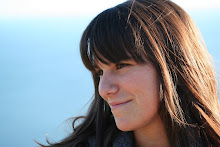
Itten foi também um dos grandes professores da Bauhaus. O seu método de ensino enquadrava-se com aquele da escola, e tendia o seu ensino para a área das cores e como estas se comportavam.
"First "Spiritus movens" of the Bauhaus
Johannes Itten was a Froebel trained elementary school teacher. After training in Geneva and Stuttgart, Johannes Itten settled in Vienna in 1916 where he taught at his own art school. He met Walter Gropius who, in 1919, invited him to join the Bauhaus which he had recently established in Weimar, the German capital. The Bauhaus was founded by the combining of the Weimar Art Academy, and the Weimar Arts and Crafts School. Students at this new school were trained by both an artist and a master craftsman.
Mein Vorkurs am Bauhaus
Itten started the Bauhaus Vorkurs, the preliminary or foundational course with its emphasis on unusual uses of common materials. Students were presented with discarded materials (wire mesh, cardboard, newspapers, matchboxes, phonograph needles and razor blades) and instructed to basteln; to improvise something. Other assignments involved the study of materials. Wood, feathers, mosses, hides had to be looked at, touched and drawn until they were known by heart and could be from memory. The idea was to transcend realistic reproduction to achieve an interpretative design instead of a mere imitation.
It is said that this method was influenced by Friedrich Froebel's pedagogy of "education through play". Itten represented the central person of the early Bauhaus years. He influenced the first era of it. The foundational course established by him came out to be decisive for the teaching program of the school.
"At the Bauhaus, artistic and technical media was taught systematically and thoroughly for the first time. The aim of my instruction in the Vorkurs (basic design course) was education to form the creative individual. This new method became famous throughout the world." Johannes Itten
"Play becomes joy, joy becomes work, work becomes play". Johannes Itten
Itten developed a general theory of contrast, the main theme of which was the "clair / obscure contrast", as the basis for this course. This was treated in various assignments: first in the form of checker-board patterns, then in abstract and finally in realistic works. Classical pictures were also analysed with the same aim in mind. By dividing it up into squares, the student was induced to work through the entire area of the picture with awareness, and to make a new decision each time regarding the respective grey value.
Itten initiated mandatory form and color education for Bauhaus students. He taught there until 1923, essentially on the concept of creation, focussing on form and color and in the process developing his theories on color and the color circle. In March 1923, Itten left the Bauhaus because Gropius no longer approved of his teaching methods - in particular of the preparatory meditation exercises and the Far-Eastern mysticism which this presupposed. Itten's departure was the first symptom of a general re-orientation of the school. The "romantic" or as others have called it, the universalistic era, came to an end.
Johannes Itten wrote several books regarding theories of color. The most influencial was The Art of colour. The book deals with contrast, saturation and hue. Itten bases his theory on science and techniques of the masters. He created color wheels, stars, triangles and spheres to support his points. The color wheel was later incorporated into many systems including computer operating systems, in which it orgainizes color.
Itten established a structural approach to the study and use of color based primarily on the light-dark opposition. The cold-warm contrast is probably the most important. The red-yellow color range is warm and the blue-green range is cool. Itten also cites complementary and simultaneous contrasts.
His artistic endeavours sought to achieve an all-encompassing artistic production. He was later to teach in Berlin, Krefeld and Zurich where, after his retirement, he produced a considerable part of his work. Johannes Itten died in Zurich in 1967."


Sem comentários:
Enviar um comentário